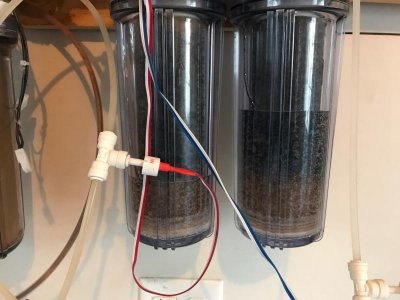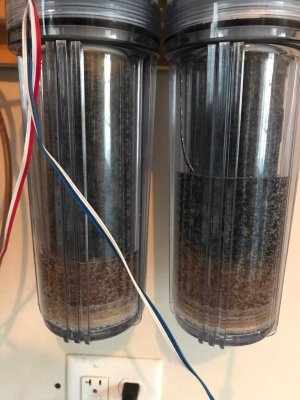The information. ~300tds out of the well, 25tds after RO membrane and 0 TDS after two canisters DI resin. Booster pump is getting pressure to 90PSI measured between membrane and resin.
System is the 150GPD.
Problem: I just replaced the tow stages of DI resin and after only making about 50 gallons mi Resin is already depleted halfway up the first canister. Also noticed it looks like it only used a partial of the first canister and started consuming the second canister as you can see from the pictures. This is older resin in the first that has been regenerated a few times so maybe it has lost its color changing ability and the stuff that did change right at the beginning was the new stuff. What are your thoughts on the rapid consumption? CO2?
System is the 150GPD.
Problem: I just replaced the tow stages of DI resin and after only making about 50 gallons mi Resin is already depleted halfway up the first canister. Also noticed it looks like it only used a partial of the first canister and started consuming the second canister as you can see from the pictures. This is older resin in the first that has been regenerated a few times so maybe it has lost its color changing ability and the stuff that did change right at the beginning was the new stuff. What are your thoughts on the rapid consumption? CO2?


